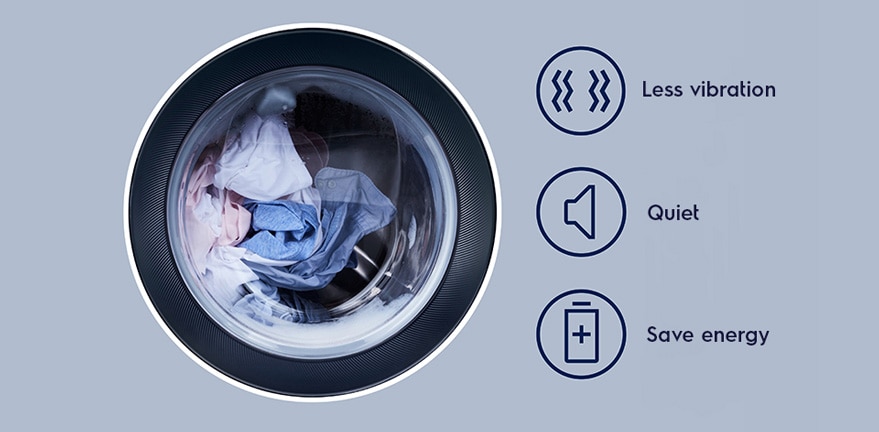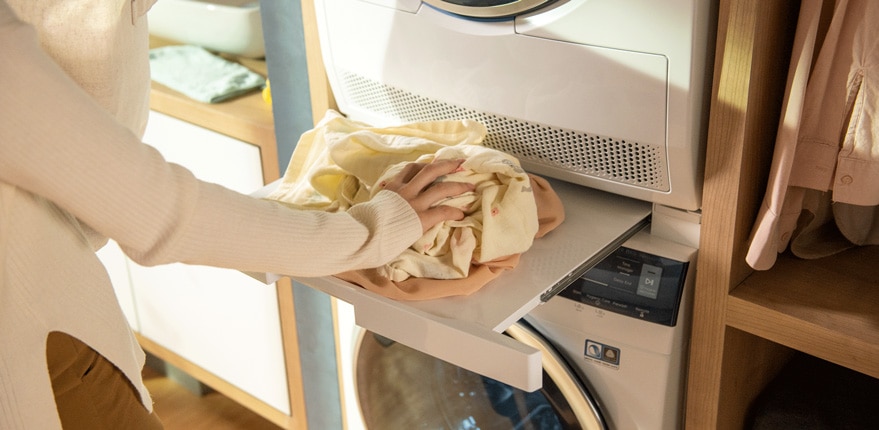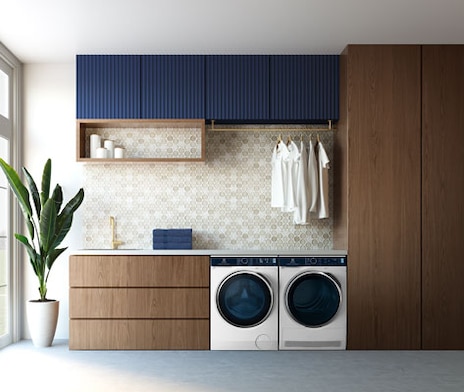1. Types of dryers
2. Energy efficiency
Electrolux dryers include a range of features that let you control the amount of energy consumed each time you use it, including dryness variability and SenseDry technology. You can also improve the energy efficiency of your dryer simply through how you use it, such as remembering to empty the lint filter after every use, choosing to use the time-delay setting to take advantage of off-peak electricity usage times, and ensuring the water container is emptied before every cycle.

3. Dryer cycles and usage
| Setting |
Use
|
|---|---|
| Cotton | Cotton is a highly durable fabric and thus resistant to damage from high heats. Hot and vigorous, the cotton setting on your dryer is best for jeans, socks, underwear (non-wired), cloths, towels and sheets. |
| Synthetic |
A lot of synthetic fabrics have a high plastic content and therefore can melt or be damaged under high heat. The synthetic setting will heat more gently, and is perfect for garments with embellishments, or those that feature fabrics such as nylon, spandex, acrylic or polyester.
|
| Delicate |
Lightweight or delicate fabrics are more sensitive to heat, so a delicate setting dries garments at a much lower heat, for longer, meaning it’s gentler on your clothes.
|
| Refresh |
Perfect for creased clothing that simply needs an airing out, this can effectively freshen up clothes that have been crumpled or folded for long periods.
|
| Energy saver |
A longer cycle on a lower heat that uses less energy than a fast, vigorous load, the energy-saver function is perfect for eco or cost-conscious consumers.
|
| Drying rack |
An accessory that can be fitted inside your dryer, the drying rack is perfect for drying bulky or awkward items such as shoes, sweaters or coats. It keeps items flat as the dryer rotates around it, preserving the garments and protecting the dryer.
|
4. Accessories

5. Looking after your dryer
To ensure optimal performance, there are some key maintenance considerations when it comes to looking after your Electrolux dryer.
Cleaning the lint trap
Removing lint buildup from the lint trap after every use not only protects your dryer and reduces the fire hazard, but ensures your dryer functions in the most energy-efficient way. Keeping a small dustbin beside the dryer is a simple way to remember to do it regularly and dispose effortlessly of the excess lint.
Emptying and cleaning water extraction container
It’s essential to regularly empty the water extraction container on your condenser dryer. This is where the excess moisture extracted from your clothes is stored, and when the container becomes too full, the dryer will no longer function properly. Make sure it is properly empty each time, to prevent pooling water.
Cleaning the heat exchanger
Every 10 dryer loads, the heat exchanger and filtration system needs a quick clean, as the residue from clothing, lint and fabric softener can clog it, reducing air-flow Use the brush fitting on your vacuum to go over your lint trap and filter, then use a damp microfibre to ensure it is free of debris.
6. Top FAQs
-
Do dryers use a lot of electricity?
The household dryer is one of the biggest energy-sucking appliances in your home, which is why choosing an energy-efficient model and using it with energy-saving consideration is so essential.
-
Does a vented dryer need to be vented outside?
Yes. Failing to properly vent a vented dryer outside increases moisture in your home, and thus condensation and mould. In addition, this can create a fire hazard.
-
Which is better, a condenser dryer or a heat pump dryer?
When it comes to choosing the right model for your family, it pays to consider how you’ll use it. Condenser dryers typically hold heavier loads and are thus better for larger families or regular users, while heat pump dryers use lower heat and can be fitted anywhere, making them a popular choice for apartment-dwellers.
-
Can you install a dryer upside down?
Yes. Some consumers choose to wall-mount their dryers above their washing machines at a significant height above the ground. For ease of accessibility when using the controls, it is possible to install it upside-down.









